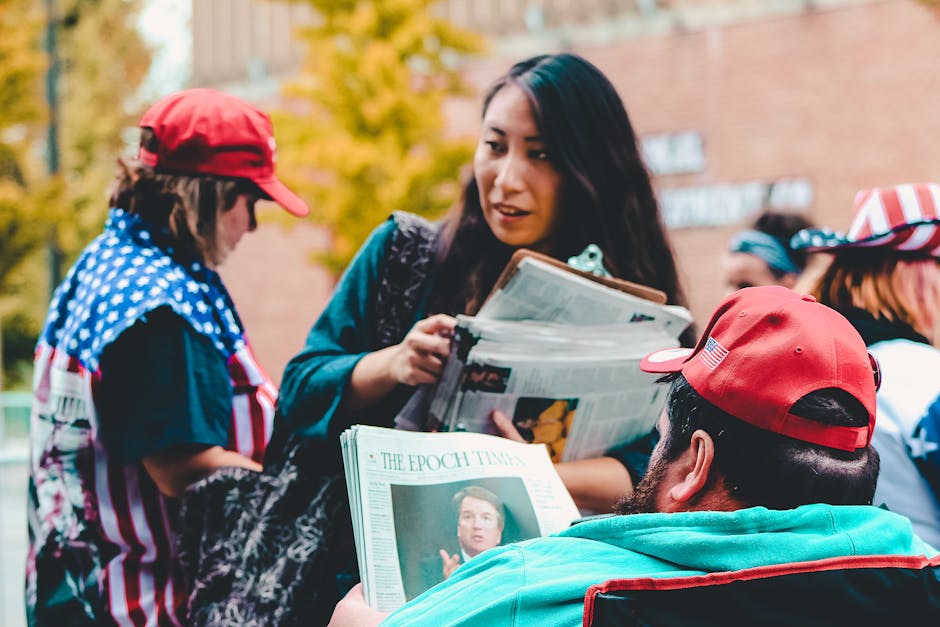Intro: News Moves Faster Now
News used to break on cable at six or land on your doorstep in the morning. Now it hits your phone seconds after it happens. Platforms like X, TikTok, and Instagram have rewired how—and how fast—information moves. The old idea of a broadcast delay? Gone. One person with a smartphone can film, upload, and spark a global headline before editors even see the wire copy.
Social media has blurred the line between reporter and bystander. A bystander’s video from a protest, a selfie from a disaster zone, or a first-hand voice note can spread faster than official statements. That shrinking gap between eyewitness and worldwide reaction is the new normal. It’s changing how citizens consume news—and how traditional outlets scramble to keep up. The speed is stunning. Sometimes empowering. Sometimes chaotic.
Whether you’re a journalist, a watcher, or just someone trying to make sense of it all, the takeaway is clear: the news cycle doesn’t just move fast anymore. It moves in real time—with all the good and bad that comes with it.
How Social Media Shapes News Reporting
Social media has become a powerful tool in modern newsrooms—not just for distributing stories, but for discovering them. Instead of waiting for press releases or official updates, journalists increasingly turn to platforms like X (formerly Twitter), Instagram, and TikTok to find leads, quotes, and critical context in real time.
Journalists Monitor Platforms Constantly
Newsrooms have adapted to the speed and fluidity of social media by:
- Scanning trending topics and hashtags
- Tracking eyewitness accounts and location-based posts
- Using social feeds to gauge public sentiment
Social platforms are often where stories break first, and journalists must be agile in parsing them before they’re officially confirmed.
Eyewitnesses Become Sources
The camera in everyone’s pocket turns ordinary users into real-time reporters. Some examples of this shift include:
- On-scene videos surfacing moments after events occur
- Livestreams documenting protests, natural disasters, or crises
- Reposts by media outlets amplifying citizen content
This democratization of reporting means journalists often rely on citizen footage to piece together initial facts—offering both immediacy and authenticity.
Crowdsourced Verification: A Double-Edged Sword
With the volume of content posted every second, verifying accuracy becomes a critical challenge:
- Online communities can collaborate to cross-check images, locations, and users
- Open-source intelligence (OSINT) practices contribute to fact-finding
- However, viral misinformation spreads just as fast—if not faster—than the truth
While social media accelerates access to information, it also requires journalists to conduct rigorous verification. Many media outlets now dedicate teams to vetting online content before running it.
In an era where anyone can share a story, the burden on reporters is higher: filter the noise, confirm the facts, and provide credible, timely coverage.
Audiences as Distributors
Social media used to be where stories spread. Now, it’s also where many of them begin—and get shaped in real time. Users aren’t just passive consumers; they’re active participants. That can mean amplifying unheard voices, surfacing local perspectives, or pushing critical updates faster than traditional outlets. But it also means stories get warped. Partial facts go viral. Nuance gets lost to speed and scale.
Hashtags, once digital footnotes, now lead coverage. Movements like #BlackLivesMatter and #IranProtests show how tags can cut through noise, rally voices, and influence professional media agendas. But not every hashtag represents truth. Some are seeded with intent to manipulate, or inflated by bots to mimic public consensus.
Everyone with a phone is a broadcaster now. That’s powerful—and risky. A front-row view of world events comes with raw accuracy and rapid reach. But without journalistic guardrails, truth gets blurry. For better or worse, control of the narrative isn’t in the newsroom anymore. It’s decentralized, fast, and often messy.
Platforms vs. Publishers
The line between platform and publisher has blurred, and it’s raising big questions. Are social media companies just digital bulletin boards, or do they have a duty to moderate what gets posted—especially when it comes to news? The answer isn’t clean. On one hand, these platforms want to avoid being labeled as traditional publishers to escape legal liability. On the other, their algorithms actively shape which stories rise and fall. That’s not exactly passive.
The debate heats up when misinformation spreads faster than corrections. Algorithm-driven visibility rewards engagement, not accuracy. A sensational headline will always outpace a cautious rewrite. Social platforms know this—and critics say that means they carry real responsibility for what people believe and act on.
Governments are catching on. Countries across Europe and parts of Asia are drafting or enforcing stricter rules that hold platforms accountable for harmful content, while the U.S. is still circling the issue. Regulation is creeping in, slowly but surely. The question is whether tech companies will get ahead of policy—or get dragged by it.
The fight over who shapes the news isn’t just philosophical. It’s practical. Billions of people use these tools to understand the world. If social media decides what we see, it can’t dodge the blame for when we get it wrong.
Trust is the Battlefield
In a news cycle increasingly shaped by speed and scale, trust has become one of the most contested elements. Social media has intensified the spread of information—but it has also eroded the traditional gatekeepers of accuracy and reliability.
What the Data Says on Trust
Survey after survey shows a complicated relationship between the public and the platforms they turn to for news:
- Declining trust in mainstream media: A 2023 Reuters Institute report found that less than half of global consumers trust the news they read or watch.
- Growing skepticism toward social media: While platforms are a top source for breaking news, users often doubt the credibility of what they see.
- Generational divide: Younger audiences are more likely to get their news from influencers or friends, not institutions.
The Rise of “Newsfluencers”
A new category of independent voices is shaping opinions in real time. These are not traditional journalists, but creators who use platforms like TikTok, YouTube, and Substack to:
- Break down complex news with personality and clarity
- Offer commentary infused with lived experience
- Build loyal followings that trust their curation over legacy institutions
While some are insightful and well-informed, others spread unverified or biased takes under the guise of news.
Spotting Credibility in a Viral World
In a flooded information ecosystem, identifying trustworthy sources takes active effort. Here are ways to evaluate what—and who—you’re watching:
- Check the source: Does the creator cite where the information came from?
- Look for transparency: Are any corrections issued or updates shared as stories develop?
- Cross-reference: Confirm details with established outlets or independent fact-checkers.
- Watch the bias: Be wary of content that prioritizes emotion over evidence, especially with polarizing issues.
As trust continues to shift from institutions to individuals, media literacy becomes essential. Knowing who to believe is no longer optional—it’s required for staying informed without being misled.
Speed vs. Accuracy
In 2024, the race to break news first is more intense—and more dangerous—than ever. Social media doesn’t wait for confirmation. One blurry screenshot or out-of-context quote can ricochet across platforms before a single editor has a chance to fact-check. For creators, influencers, and even legacy outlets, the temptation is clear: publish fast or risk being irrelevant.
But speed isn’t free. The cost of getting it wrong in a viral moment can undo years of credibility in hours. Just look at the 2023 New York City blackout story—an edited clip suggesting a terror attack misled millions before local reporters corrected it. Or the influencer who falsely reported a celebrity’s death, only to face public backlash and monetization bans.
The pattern is familiar: rush to report, skip verification, issue an apology that no one sees. The lesson? Viewers crave immediacy, but they respect reliability. Good journalism—whether done by pros or digital natives—requires a pause, even if it’s just thirty seconds to verify a source.
In a landscape where every delay feels like a missed opportunity, those who can build trust by choosing accuracy over clicks will be the ones still standing when the smoke clears.
The Business Side of Viral News
Clicks aren’t just about popularity—they’re currency. Every tap, share, and reaction feeds a revenue system built on attention. News organizations, especially online-only outlets, rely heavily on ad impressions and page views. The more viral the story, the higher the payout. That creates pressure to frame headlines for maximum urgency—sometimes at the cost of nuance or fact-checking.
This is where the line blurs between journalism and content farming. Some sites churn out recycled analysis or drama-bait articles with little original reporting. Others use trending stories as scaffolding to draw in clicks, even if it means forcing connections or stirring outrage. The line is thin—and often crossed—not because newsrooms don’t know better, but because the algorithms reward it.
Traditional newsrooms are caught in the crossfire. Legacy outlets trying to hold the line on journalistic integrity often lose ad dollars to faster, flashier players. Many have been forced to adapt, chasing analytics and social engagement to stay afloat. Some have pivoted successfully; others are shrinking or shuttering.
In this model, attention is everything—accuracy takes second place more often than it should. That’s the hard truth of the 2024 news economy.
Looking Ahead
Decentralized, real-time, user-driven news isn’t on the horizon—it’s already here. Traditional gatekeepers are no longer in charge of the flow of information. Instead, content breaks on social media, gets shaped in quote tweets, dissected in comments, and validated—or debunked—in near real-time. In this new reality, the line between audience and journalist is thinner than ever.
For reporters, this means moving fast, but not loose. Verification has to evolve with the pace of the cycle. Dismissing social content as unreliable is no longer an option; learning how to cross-reference posts, identify patterns, and trace original sources is part of the job now. Readers carry their own weight in this too. It’s not enough to consume—people need to slow down, source-check, and understand the difference between opinion and fact.
Platforms? They’re the new infrastructure. With that comes responsibility: clearer algorithms, stronger moderation cues, and more transparency about what’s shown and why. Whether they lean in or dodge regulation will shape how trustworthy and useful these ecosystems remain.
Bottom line: staying informed in 2024 isn’t about keeping up with everything. It’s about filtering the noise, spotting the signal, and not letting constant connection trade away your critical thinking.
For ongoing insight into the media landscape, check out Weekly Media Highlights: Key Stories You Need to Know.




